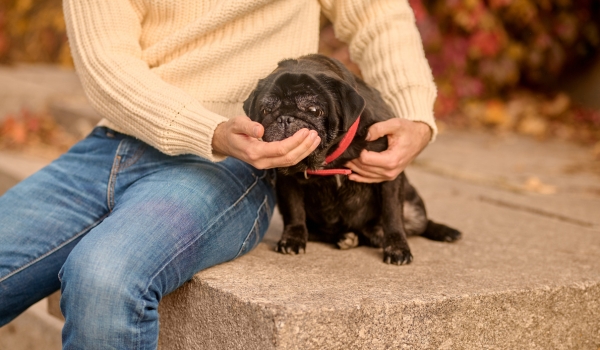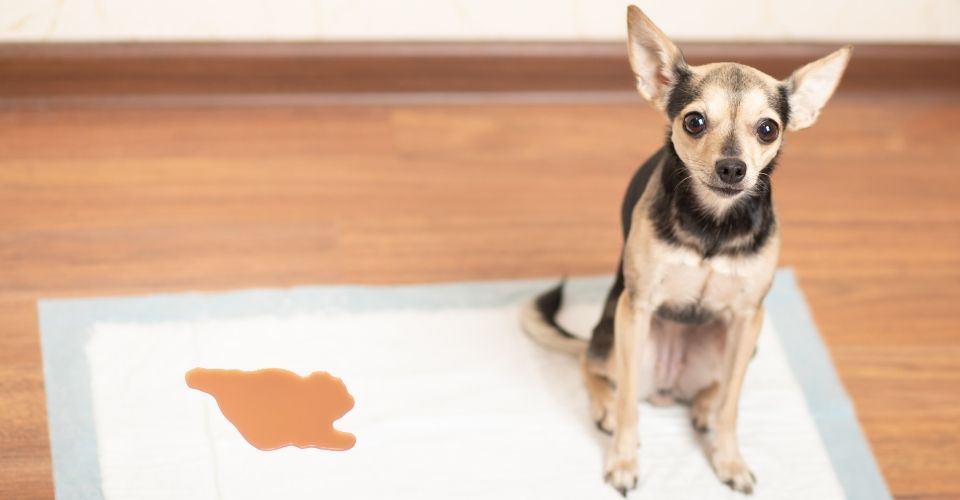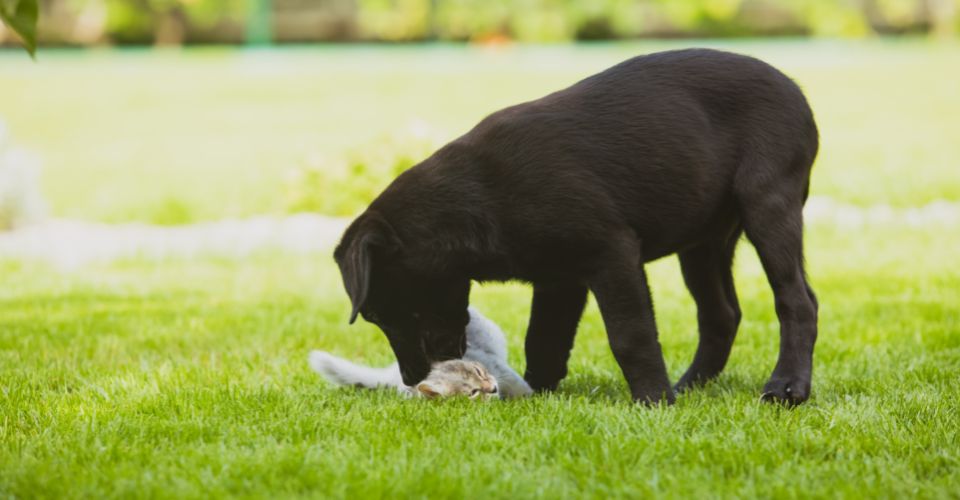Have you ever woken up with a numb arm or leg, feeling like it is full of pins and needles? It is a strange and uncomfortable sensation that most of us have experienced at some point. But have you ever wondered if your furry friend could experience the same thing?
That is right—we are talking about dogs! Do dogs get pins and needles? This is a question that has puzzled many pet owners, but the answer is not as straightforward as you might think.
In this blog post, we will explore the science behind pins and needles sensations, take a closer look at the nervous system of dogs, and discuss whether or not dogs can experience this strange and uncomfortable sensation.
Do Dogs Get Pins and Needles?
Yes, dogs can experience pins and needles, just like humans do. This strange and uncomfortable sensation occurs when the blood supply to the nerves is cut off, usually in the limbs. This can happen when there is enough pressure on the nerves to choke their connectivity with the brain, often when dogs sit on their legs for an extended period of time.
The technical term for this sensation is paresthesia, a common occurrence in humans and dogs. Paresthesia occurs when the sensory nerves in the limbs are compressed or damaged, leading to a tingling or prickling sensation. This sensation can also be accompanied by numbness or a feeling of “pins and needles” in the affected area.
While the sensation may be uncomfortable, it is generally harmless and typically resolves on its own once the pressure is released from the affected nerve. However, in some cases, prolonged or repeated episodes of paresthesia can lead to nerve damage or other health complications. It is important to monitor your dog for signs of paresthesia and seek veterinary care if you notice any concerning symptoms.
What Causes Pins and Needles in Dogs?
- Prolonged Sitting: When dogs keep sitting in one position for a long period, they get extended pressure on their nerves. The limbs bearing the most pressure are usually affected more. You might notice the signs of pins and needles in your dog when you let him out of his cage or carrier.
- Number of Nerves: Every dog breed is different. Some have more nerve ending in their limbs, while others have fewer. This can impact their sensitivity toward the needle and pin feeling.
- Obesity: If a dog is overweight, he will press the nerves in the limbs more severely than average-weighing dogs. Other than applying direct pressure, other health concerns arising from obesity may also exacerbate the issue. For instance, if there is cholesterol in the blood, the flow can be hampered.
- Medical Conditions: Some health issues, such as arthritis, can make a dog more prone to getting numb limbs. If you suspect such problems in your dog, contact a vet ASAP.
How to Know If a Dog Is Getting Pins and Needles?
If you suspect that your dog is experiencing pins and needles, there are several signs to watch for.
One of the most common indicators is limp in gait. When dogs experience the sensation of pins and needles, it can be difficult for them to control their legs, just like it can be challenging for humans. As a result, you may notice your dog limping or struggling to walk properly.
In addition to limping, dogs may also exhibit other signs of discomfort when experiencing paresthesia. For example, they may shake the affected leg or repeatedly lick and bite at it. You may also notice that your dog is unable to stand straight, or it may slide its leg on the floor while walking as if it is dead. These behaviors typically go away when the numbness subsides.
Pay close attention to your dog’s behavior and look for these signs of discomfort, especially if you suspect that they have been sitting or confined for a prolonged period. If you notice any concerning symptoms, such as persistent limping or an inability to stand, it is crucial to seek veterinary care promptly. Your vet can perform a thorough exam to determine the underlying cause of your dog’s discomfort and recommend an appropriate course of treatment.
But Not All Needle and Pins Signs Are Normal…
If your dog’s gait has changed, it does not necessarily mean he has got a sleeping leg. There could be some health disorders behind this change. If you see frequent or permanent changes in the gait, you can suspect such issues since pins and needles happen briefly and do not occur very often. Look for the following issues in your pooch:
- Something Is Lodged in the Paw: If something is stuck on the base of the foot, your canine will not stand on that leg since the added pressure could cause pain. Eventually, he will drag his foot, altering the gait.
- The Bone May Be Fractured: While there are some lazy dog breeds, who just love to lounge all day, most dogs are energetic and are physically very active. During their physical activity, dogs may experience accidents, which may cause an injury or a bone fracture. In such cases, a dog will either be reluctant to walk or have a problematic gait, especially if the injury is in the limbs.
- He Is Suffering From Dysplasia: In this problem, the hip joints become loose, causing pain and dysfunction. It usually occurs during the growth stage of dogs. Various health issues, such as obesity, can lead to it, but some breeds are naturally inclined to suffer from it.
- You Have Cut Your Dog’s Nail Quick: If you have cut your dog’s nails too deep, he could feel pain and discomfort while walking. In fact, as a precautionary measure, you should not walk your dog if you have cut the quick.
- There Are Muscles and Joint Issues: Problems like torn muscles and joint injuries can change a dog’s gait. The resultant pain can make it very difficult for a dog to walk and even stand normally. This is usually more prevalent in older dogs.
How to Prevent Pins and Needles in Dogs?
To prevent pins and needles in dogs, maintaining a healthy weight and regular exercise can be helpful. Overweight dogs add more pressure to their nerves while sitting, which can be avoided by keeping their weight in check.
An active lifestyle also increases blood flow, decreasing the chances of numbness in the body. However, it is almost impossible to avoid pins and needles entirely, as the risk of nerves being choked in the limbs always exists when the dog sits in one position for a long time.
Aside from weight and exercise, you can do a few other things to prevent pins and needles in your dog. For example, providing your dog with a comfortable bed or cushion to sleep on can help distribute pressure on their limbs evenly, reducing the likelihood of nerve compression. Additionally, if you notice your dog frequently sitting with its legs tucked under them for extended periods, encourage them to move around and change positions regularly.
It is also important to regularly examine your dog’s paws and nails for any signs of injury or irritation. This can include checking for foreign objects lodged in their paws, trimming their nails to an appropriate length, and keeping the area between their toes clean and dry.
If your dog is prone to joint issues, you may want to consider adding joint supplements to its diet. These supplements can help maintain healthy joint function, reducing the likelihood of limping or altered gait due to pain or discomfort. Additionally, if your dog is already suffering from joint pain or arthritis, your vet may recommend specific medications or therapies to manage their symptoms and improve their quality of life.
Conclusion: Do Dogs Get Pins and Needles?
Just like humans, when dogs sleep wrong or sit in one position for a long time, their limbs may fall asleep, and they may feel pins and needles. If your dog is limping or shuddering his leg after getting up after a long sleep session, he might feel pins and needles. But it is completely normal and usually goes away on its own in a couple of minutes.






